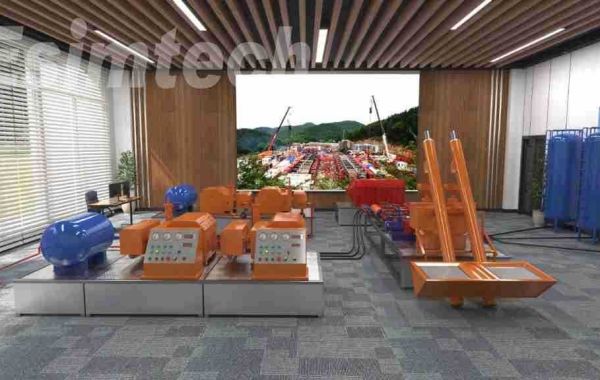Enter fracturing and acidizing training simulators, innovative tools that are revolutionizing the way the industry prepares its workforce.
The Challenges of Traditional Training:
Traditionally, training for fracturing and acidizing crews involved a combination of classroom lectures and limited on-the-job experience. This approach presented several challenges:
Limited Practical Experience: Real-world experience is crucial, but on-site opportunities can be scarce. This can leave trainees unprepared for the complexities of actual fracturing and acidizing jobs.
Safety Concerns: Practicing these techniques on live wells poses significant safety risks. Mistakes during well operations can be costly and potentially dangerous.
High Training Costs: Mobilizing equipment and personnel for field training is expensive.
The Rise of Simulation Technology:
Fracturing and acidizing training simulators offer a powerful solution to these challenges. These advanced computer programs replicate real-world wellbore scenarios in a safe, controlled virtual environment. Here's how they are transforming training:
Realistic Scenarios: Simulators provide trainees with immersive experiences that mimic real-world fracturing and acidizing operations. They can encounter equipment malfunctions, changing wellbore conditions, and pressure fluctuations, all within a safe virtual space.
Enhanced Skill Development: Through repeated practice in simulated scenarios, trainees develop critical skills like fluid mixing, pressure control, and wellbore monitoring. This translates to a more competent and adaptable workforce.
Improved Safety Culture: Training on simulators allows crews to practice emergency response procedures and decision-making in a risk-free environment. This fosters a strong safety culture and equips them to handle unexpected situations on the job, potentially reducing accidents and injuries.
Cost Savings and Efficiency Gains:
The benefits of fracturing and acidizing training simulators extend beyond safety and skill development. They offer significant cost savings and efficiency gains for oil and gas companies:
Reduced Training Costs: Simulators eliminate the need for expensive field training exercises, lowering overall training expenditures.
Minimized Downtime: Well-trained crews can complete fracturing and acidizing jobs faster and more efficiently, minimizing production downtime.
Reduced Risk of Errors: The ability to practice and troubleshoot in a simulated environment can lead to fewer errors during live operations, reducing the risk of costly wellbore issues.
The Future of Well Stimulation Training:
Fracturing and acidizing training simulators are rapidly becoming an essential tool in the oil and gas industry. As technology continues to evolve, these simulators will become even more sophisticated, offering even more realistic scenarios and advanced training modules. This will ensure a highly skilled workforce prepared to tackle the challenges of unconventional resource development, leading to a more efficient, safe, and cost-effective future for the industry.








